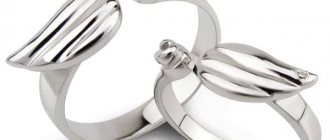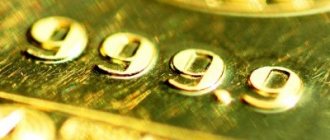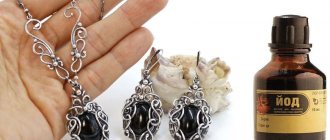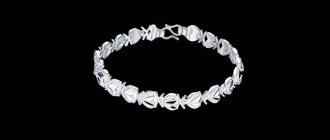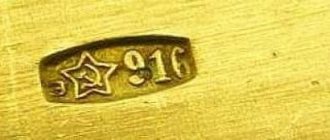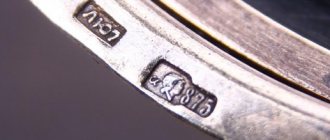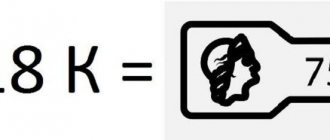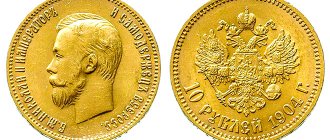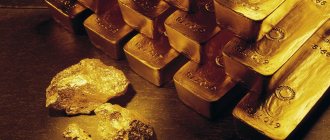Post updated: Jun 6, 2020
Almost everyone in school was told by their chemistry teachers about the incredible density of the yellow metal. And most of the students asked what is heavier, gold or its counterpart on the periodic table - lead? It is about 19.3 grams per cubic centimeter. Due to its chemical composition, gold does not enter into any reactions with the environment.
That is why it is so actively used in dentistry. This metal can be not only yellow. It depends on the components included in its composition. However, regardless of color, products made from this metal are incredibly popular.
The question arises, how does the density of gold compare to the density of other metals? Which element has the largest mass? This article can answer these and many other questions.
Uses of gold
The demand for the yellow metal determines not only its use in the production of jewelry and the increase in the state’s gold and foreign exchange reserves. It is also very widely used in many other areas.
In industry, gold began to be actively used due to its chemical properties. It covers mirrors operating in the far infrared range. This is especially useful when conducting all kinds of nuclear research. Gold is also very often used for soldering components made of various materials.
Another area of application is dentistry. This is due not only to the impossibility of the yellow metal entering into a chemical bond with the human body, but also to its incredible corrosion resistance.
Pharmacology also cannot do without the use of this amazing yellow metal. Gold compounds are now actively used in various medical preparations that save from a wide variety of diseases.
These are not the only uses for gold. Due to rapid progress, there is an increasing need to use gold content in technological innovations. From this we can conclude that yellow metal is not only an attribute of luxury, but also a useful technical tool, the importance of which is increasing every year.
What do the earrings symbolize?
They symbolize
female beauty, wisdom and immortality, as well as the cyclical nature of life.
Drop earrings
have a double meaning.
It is both a symbol of tears and blood, as well as a drop in the vast ocean of the human mind. earrings
in the form of a ring will emphasize such traits of your character as integrity, authority and perfection.
Interesting materials:
What is love according to psychologists? What is an onion? What is a magnetic field and what are its properties? What is Macca? What is a small fraction? What is a Manifesting Generator? What is a Manifestor? What is manipulation and how to recognize it? What is a mantra and how does it work? What are continents on the Moon?
Silver
Silver, like gold, has been known to mankind since ancient times. It is used not only in the manufacture of jewelry, but also for the production of tableware. Previously, silver was very actively used in coinage. And today you can see some coins containing a little silver. When choosing a precious metal, the question often arises: what is heavier, gold or another precious metal - silver.
The density of this metal is slightly less than that of lead. It is equal to 10.5 grams per cubic centimeter. This means that gold is almost twice as heavy as silver.
In addition to creating silverware and various jewelry, this material is very actively used in industry, as well as in the photographic industry.
The main properties due to which this element has become so widely used in the industrial field are excellent thermal and electrical conductivity, excellent resistance to interaction with the environment, as well as excellent reflectivity.
Rapidly developing technological progress has significantly reduced the use of silver in the photographic industry. This is due to the fact that thanks to the introduction of modern technologies, the process of producing and using photographic equipment has become much more accessible to most people. This is what ensured a reduction in the use of silver by more than 3 times.
Due to its bactericidal properties, this metal is very actively used in medicine. Currently, silver is used to produce antibacterial patches, as well as to produce filters for purifying water from harmful microorganisms.
Silver nitrate used in medicine.
What is heavier with the same volume - gold or silver?
Let's try to figure out this simple question. To answer this, we first need to remember what we were taught at school in physics and chemistry lessons. So, in order to find out the mass, you need to multiply the density by the volume. Accordingly, with equal volume we look at the density. Now we take specific values for each of the precious metals. In particular, density:
• silver – 10,500 kilograms per cubic meter; • gold – 19320.
That's all - the answer to the question has been found. Since the density of gold is higher, this precious metal is heavier. It is clear that we are talking about the same volumes of precious metals. Without this clarification, the comparison will simply be incorrect. It turns out that a ton of gold will take up approximately 2 times less space than a silver bar with the same weight. If you take two pieces of precious metal that are identical in size, then the gold one will be heavier. Let's give a simple example with specific numbers.
A ball with a diameter of 46.23 millimeters, made of gold, will weigh 1 kilogram. Therefore, even relatively light jewelry made from this precious metal looks impressive.
For companies involved in gold exploration and mining, deposits that contain at least one gram (.) of gold for every ton of land are extremely promising.
Lead
It should be said that the density of lead is almost 10 times less than the density of the noble yellow metal. To understand the density of lead, it should be said that the density of birch or linden is 25 times less. According to the density table, lead is in 20th place, and gold is in seventh. From this it is easy to conclude that the yellow metal is much heavier than its opponent.
This element is very well used in the production of various metal structures, as well as in the medical field. This is due to the non-transmission of X-ray rays. The widespread use of lead in various fields is also associated with the very cheap cost of this metal. Its cost is almost half the cost of aluminum. Another advantage is the relative ease of extraction of this material, which provides a huge supply to the world market.
Density of metals
Table of density ρ of materials g/cm3 (kg/dm3) and coefficients K = ρ/7.85*
* According to the reference book P.M. Polivanov, E.P. Polivanova. Tables for calculating the mass of parts and materials: Handbook. 13th edition, 2006 (revised in accordance with GOST standards).
| Group name | Name of material, brand | ρ | TO |
| PURE METALS | |||
| Pure metals | Aluminum | 2,7 | 0,34 |
| Beryllium | 1,84 | 0,23 | |
| Vanadium | 6,5-7,1 | 0,83-0,90 | |
| Bismuth | 9,8 | 1,24 | |
| Tungsten | 19,3 | 2,45 | |
| Gallium | 5,91 | 0,75 | |
| Hafnium | 13,09 | 1,66 | |
| Germanium | 5,33 | 0,68 | |
| Gold | 19,32 | 2,45 | |
| Indium | 7,36 | 0,93 | |
| Iridium | 22,4 | 2,84 | |
| Cadmium | 8,64 | 1,10 | |
| Cobalt | 8,9 | 1,13 | |
| Silicon | 2,55 | 0,32 | |
| Lithium | 0,53 | 0,07 | |
| Magnesium | 1,74 | 0,22 | |
| Copper | 8,94 | 1,14 | |
| Molybdenum | 10,3 | 1,31 | |
| Manganese | 7,2-7,4 | 0,91-0,94 | |
| Sodium | 0,97 | 0,12 | |
| Nickel | 8,9 | 1,13 | |
| Tin | 7,3 | 0,93 | |
| Palladium | 12,0 | 1,52 | |
| Platinum | 21,2-21,5 | 2,69-2,73 | |
| Rhenium | 21,0 | 2,67 | |
| Rhodium | 12,48 | 1,58 | |
| Mercury | 13,6 | 1,73 | |
| Rubidium | 1,52 | 0,19 | |
| Ruthenium | 12,45 | 1,58 | |
| Lead | 11,37 | 1,44 | |
| Silver | 10,5 | 1,33 | |
| Waist | 11,85 | 1,50 | |
| Tantalum | 16,6 | 2,11 | |
| Tellurium | 6,25 | 0,79 | |
| Titanium | 4,5 | 0,57 | |
| Chromium | 7,14 | 0,91 | |
| Zinc | 7,13 | 0,91 | |
| Zirconium | 6,53 | 0,82 | |
| ALLOYS FROM NON-FERROUS METALS | |||
| Aluminum casting alloys | AL1 | 2,75 | 0,35 |
| AL2 | 2,65 | 0,34 | |
| AL3 | 2,70 | 0,34 | |
| AL4 | 2,65 | 0,34 | |
| AL5 | 2,68 | 0,34 | |
| AL7 | 2,80 | 0,36 | |
| AL8 | 2,55 | 0,32 | |
| AL9 (AK7ch) | 2,66 | 0,34 | |
| AL11 (AK7TS9) | 2,94 | 0,37 | |
| AL13 (AMg5K) | 2,60 | 0,33 | |
| AL19 (AM5) | 2,78 | 0,35 | |
| AL21 | 2,83 | 0,36 | |
| AL22 (AMg11) | 2,50 | 0,32 | |
| AL24 (AC4Mg) | 2,74 | 0,35 | |
| AL25 | 2,72 | 0,35 | |
| Tin and lead babbits | B88 | 7,35 | 0,93 |
| B83 | 7,38 | 0,94 | |
| B83S | 7,40 | 0,94 | |
| BN | 9,50 | 1,21 | |
| B16 | 9,29 | 1,18 | |
| BS6 | 10,05 | 1,29 | |
| Tin-free bronzes, foundry | BrAmts9-2L | 7,6 | 0,97 |
| BrAZH9-4L | 7,6 | 0,97 | |
| BrAMZH10-4-4L | 7,6 | 0,97 | |
| BrS30 | 9,4 | 1,19 | |
| Tin-free bronzes, pressure-processed | BrA5 | 8,2 | 1,04 |
| BrA7 | 7,8 | 0,99 | |
| BrAmts9-2 | 7,6 | 0,97 | |
| BrAZH9-4 | 7,6 | 0,97 | |
| BrAZhMts10-3-1.5 | 7,5 | 0,95 | |
| BrAZHN10-4-4 | 7,5 | 0,95 | |
| BrB2 | 8,2 | 1,04 | |
| BrBNT1.7 | 8,2 | 1,04 | |
| BrBNT1.9 | 8,2 | 1,04 | |
| BrKMts3-1 | 8,4 | 1,07 | |
| BrKN1-3 | 8,6 | 1,09 | |
| BrMts5 | 8,6 | 1,09 | |
| Bronze tin deformable | BrOF8-0.3 | 8,6 | 1,09 |
| BrOF7-0.2 | 8,6 | 1,09 | |
| BrOF6.5-0.4 | 8,7 | 1,11 | |
| BrOF6.5-0.15 | 8,8 | 1,12 | |
| BrOF4-0.25 | 8,9 | 1,13 | |
| BrOTs4-3 | 8,8 | 1,12 | |
| BrOTsS4-4-2.5 | 8,9 | 1,13 | |
| BrOTsS4-4-4 | 9,1 | 1,16 | |
| Bronze tin castings | BrO3TS7S5N1 | 8,84 | 1,12 |
| BrO3Ts12S5 | 8,69 | 1,10 | |
| BrO5TS5S5 | 8,84 | 1,12 | |
| BrO4Ts4S17 | 9,0 | 1,14 | |
| BrO4TS7S5 | 8,70 | 1,10 | |
| Beryllium bronzes | BrB2 | 8,2 | 1,04 |
| BrBNT1.9 | 8,2 | 1,04 | |
| BrBNT1.7 | 8,2 | 1,04 | |
| Copper-zinc alloys (brass) foundry | LTs16K4 | 8,3 | 1,05 |
| LTs14K3S3 | 8,6 | 1,09 | |
| LTs23A6Zh3Mts2 | 8,5 | 1,08 | |
| LC30A3 | 8,5 | 1,08 | |
| LTs38Mts2S2 | 8,5 | 1,08 | |
| LTs40S | 8,5 | 1,08 | |
| LS40d | 8,5 | 1,08 | |
| LTs37Mts2S2K | 8,5 | 1,08 | |
| LTs40Mts3ZH | 8,5 | 1,08 | |
| Copper-zinc alloys (brass), pressure-processed | L96 | 8,85 | 1,12 |
| L90 | 8,78 | 1,12 | |
| L85 | 8,75 | 1,11 | |
| L80 | 8,66 | 1,10 | |
| L70 | 8,61 | 1,09 | |
| L68 | 8,60 | 1,09 | |
| L63 | 8,44 | 1,07 | |
| L60 | 8,40 | 1,07 | |
| LA77-2 | 8,60 | 1,09 | |
| LAZ60-1-1 | 8,20 | 1,04 | |
| LAN59-3-2 | 8,40 | 1,07 | |
| LZhMts59-1-1 | 8,50 | 1,08 | |
| LN65-5 | 8,60 | 1,09 | |
| LMts58-2 | 8,40 | 1,07 | |
| LMtsA57-3-1 | 8,10 | 1,03 | |
| Pressed and drawn brass rods | L60, L63 | 8,40 | 1,07 |
| LS59-1 | 8,45 | 1,07 | |
| LZhS58-1-1 | 8,45 | 1,07 | |
| LS63-3, LMts58-2 | 8,50 | 1,08 | |
| LZhMts59-1-1 | 8,50 | 1,08 | |
| LAZ60-1-1 | 8,20 | 1,04 | |
| Magnesium alloys foundry | Ml3 | 1,78 | 0,23 |
| ML4 | 1,83 | 0,23 | |
| Ml5 | 1,81 | 0,23 | |
| Ml6 | 1,76 | 0,22 | |
| Ml10 | 1,78 | 0,23 | |
| Ml11 | 1,80 | 0,23 | |
| Ml12 | 1,81 | 0,23 | |
| Magnesium alloys wrought | MA1 | 1,76 | 0,22 |
| MA2 | 1,78 | 0,23 | |
| MA2-1 | 1,79 | 0,23 | |
| MA5 | 1,82 | 0,23 | |
| MA8 | 1,78 | 0,23 | |
| MA14 | 1,80 | 0,23 | |
| Pressure-processed copper-nickel alloys | Kopel MNMts43-0.5 | 8,9 | 1,13 |
| Constantan MNMts40-1.5 | 8,9 | 1,13 | |
| Cupronickel MnZhMts30-1-1 | 8,9 | 1,13 | |
| Alloy MNZh5-1 | 8,7 | 1,11 | |
| Cupronickel MH19 | 8,9 | 1,13 | |
| Alloy TB MN16 | 9,02 | 1,15 | |
| Nickel silver MNTs15-20 | 8,7 | 1,11 | |
| Kunial A MNA13-3 | 8,5 | 1,08 | |
| Kunial B MNA6-1.5 | 8,7 | 1,11 | |
| Manganin MNMts3-12 | 8,4 | 1,07 | |
| Nickel alloys | NK 0.2 | 8,9 | 1,13 |
| NMTs2.5 | 8,9 | 1,13 | |
| NMTs5 | 8,8 | 1,12 | |
| Alumel NMtsAK2-2-1 | 8,5 | 1,08 | |
| Chromel T HX9.5 | 8,7 | 1,11 | |
| Monel NMZHMts28-2.5-1.5 | 8,8 | 1,12 | |
| Anti-friction zinc alloys | TsAM 9-1.5L | 6,2 | 0,79 |
| TsAM 9-1.5 | 6,2 | 0,79 | |
| TsAM 10-5L | 6,3 | 0,80 | |
| TsAM 10-5 | 6,3 | 0,80 | |
| STEEL, SHAVINGS, CAST IRON | |||
| Stainless steel | 04Х18Н10 | 7,90 | 1,00 |
| 08Х13 | 7,70 | 0,98 | |
| 08Х17Т | 7,70 | 0,98 | |
| 08Х20Н14С2 | 7,70 | 0,98 | |
| 08Х18Н10 | 7,90 | 1,00 | |
| 08Х18Н10Т | 7,90 | 1,00 | |
| 08Х18Н12Т | 7,95 | 1,01 | |
| 08Х17Н15М3Т | 8,10 | 1,03 | |
| 08Х22Н6Т | 7,60 | 0,97 | |
| 08Х18Н12Б | 7,90 | 1,00 | |
| 10Х17Н13М2Т | 8,00 | 1,02 | |
| 10Х23Н18 | 7,95 | 1,01 | |
| 12Х13 | 7,70 | 0,98 | |
| 12Х17 | 7,70 | 0,98 | |
| 12Х18Н10Т | 7,90 | 1,01 | |
| 12Х18Н12Т | 7,90 | 1,00 | |
| 12Х18Н9 | 7,90 | 1,00 | |
| 15Х25Т | 7,60 | 0,97 | |
| Structural steel | Structural steel | 7,85 | 1,0 |
| Steel casting | Steel casting | 7,80 | 0,99 |
| High-speed steel with tungsten content, % | 5 | 8,10 | 1,03 |
| 10 | 8,35 | 1,06 | |
| 15 | 8,60 | 1,09 | |
| 18 | 8,90 | 1,13 | |
| Chips (t/m3) | aluminum fine crushed | 0,70 | |
| steel (small loach) | 0,55 | ||
| steel (large loach) | 0,25 | ||
| cast iron | 2,00 | ||
| Cast iron | grey | 7,0-7,2 | 0,89-0,91 |
| malleable and high strength | 7,2-7,4 | 0,91-0,94 | |
| antifriction | 7,4-7,6 | 0,94-0,97 | |
Iron
It is one of the oldest metals known to man. The first metal products, according to the results of archaeological research, appeared in the fourth millennium BC. Iron is much cheaper than the yellow precious metal. This is due to the high content of iron ore in the depths. And as they say in the economics textbook, the greater the demand, the lower the price of the product.
Unlike gold, iron has several oxidation states, and it interacts very actively with the environment. Russia occupies a leading position in the world in terms of iron ore reserves.
You should immediately answer the question of interest: what is heavier, a precious metal such as gold or ordinary iron. To answer this you will need to look at the density of metals. The density of the precious metal is already known, let’s find the value for iron. It is equal to 7.844 grams per cubic centimeter. It follows from this that this metal, with an equal volume, is not only lighter than gold, but also silver and lead.
Comparison of gold with other metals
Lead Pb (from the Latin Plumbum) is an element of group 14, the sixth period of the periodic table, atomic number - 82. Its density is 11.3 g/cm³, and is classified as a heavy metal.
Lead is shiny, soft, malleable, and has a gray-blue color when cut. When exposed to air, it becomes covered with an oxide film, which serves as a kind of protection, but fades over time.
It was used by humans in ancient metallurgical processes, namely smelting. Native lead, like gold and silver, is very rarely found in nature. Most often these are impurities with zinc. It is mined in ores, after which it is processed in shaft furnaces by firing.
This metal differs from the above in its low thermal conductivity, is prone to damage, is easily scratched, and can be cut with a knife. As it heats up, its density decreases. Also one of its disadvantages is toxicity.
In case of poisoning, sharp sharp pains in the abdomen, convulsions and even fainting are noticed. Lead can accumulate in the kidneys and liver.
Next in line is hardware. How are things going with him? Let's take a closer look at its properties.
Iron Fe (from the Latin Ferrum) is an element of group 8, the fourth period of the periodic table, atomic number - 26. Density - 7.874 g/cm³.
It ranks second in abundance in the earth's crust, after aluminum. The metal has a silvery-white color, is malleable, burns in pure oxygen, is susceptible to corrosion at high humidity, in its pure form is soft and ductile, various impurities increase hardness and brittleness.
Its average hardness is 4 out of 10 on the Mohs scale. Has magnetic properties. Found in iron-nickel meteorites. Scientists believe that the earth's core is mostly made of iron.
Given its properties, iron is used in the manufacture of magnets, both small in size (in household appliances) and for large-scale production. The strength of the material is used for casting weapons and armor. Widely used alloys are cast iron and steel.
The density of iron depends on its chemical composition. For example, the presence of silicon and carbon in the alloy reduces its properties. While cast iron has the opposite effect and increases density.
Now let's return to the topic of our article and determine which of the materials described above is the heaviest? It was not in vain that we considered the density of gold, silver, lead and iron. It is this factor that affects weight. We can come to the conclusion that if you put several identical pieces of the above-mentioned metals, they will turn out to be different in volume and size.
Source
Platinum
This element has been known since time immemorial, but in Europe, in its pure form, it was obtained at the beginning of the 19th century. Platinum is a noble metal whose value used to be 2.2 times that of gold. This was due to the very small amount of platinum in the world. There are about 30 grams of platinum per kilogram of the yellow metal. At this point in time, the cost of gold is noticeably higher. This is due to the chemical and physical properties of the metal.
Platinum is a white-silver metal of extraordinary beauty, which, like gold, occupies a leading place among metals. The most important feature of this metal is its strength. Therefore, platinum jewelry does not wear out. In Russia, the following hallmarks of platinum exist: 950,900, 850. Platinum jewelry contains about 95% pure platinum, and a gold item contains 750 hallmarks, 75% gold.
Due to its high content, this metal is almost impossible to scratch. This is why it is so widely used in industry. But with gold it’s a completely different story. Another reason is the fact that all countries' gold and foreign exchange funds consist of gold. This practice has evolved over centuries and now it is simply pointless to spend decades reforming a well-functioning system.
It is surprising that platinum, at a certain period of time, was considered waste from gold mining, which was immediately thrown away.
Having assessed the density of the above metals, I wanted to know what would be heavier, gold, which will remain the unsurpassed leader, or platinum. The density of platinum is 21.45 grams per cubic centimeter. From this we can conclude that platinum is heavier than the yellow metal. Therefore, jewelry made of platinum weighs more than jewelry made of gold.
Characteristics and influence of the sample on weight
Gold and silver are noble metals, malleable, ductile, classified as precious, yellow and silver-white in color, respectively. They are well machined. Au is immune to chemical oxidizing agents, even the strongest ones. Only “royal vodka” (a mixture of acids) can dissolve it.
Separate assays for gold and silver are established and used. How pure an element is is easy to determine by testing:
- Thus, for Au, samples 375, 500, 585, 750, 958 are used (999 is pure). The higher the sample, the denser the alloy, and accordingly, the greater the weight. The less noble metal in the alloy, the lighter it is.
- For silver, the lowest grade is 720, the highest is 960. Alloys of different grades differ visually. The worse the sample, the less recognizable shine, the yellowness that is no longer characteristic of pure Ag.
Heaviest elements
The density of five elements was given above, of which platinum is the heaviest. However, it is not the heaviest element existing on earth. The density of the heaviest element is 22.61 grams per cubic centimeter. His name is Osmium.
Only this is not the limit of density. True, this element was created artificially in 1984. They named it Hassiy, its density is almost twice that of osmium.
Surprisingly, this is not a chapel either. There are materials many tens of times higher than the density of Hassia. However, they are in outer space. The matter contained in white dwarfs can have a density of up to 1000 tons per cubic centimeter. This news shocked the world community.
However, this is not the limit. Neutron stars contain matter with a density of about 500 million tons per cubic centimeter. This figure can easily be surpassed by the density of black holes, however, due to the difficulties of conducting research, this is only theoretical.
